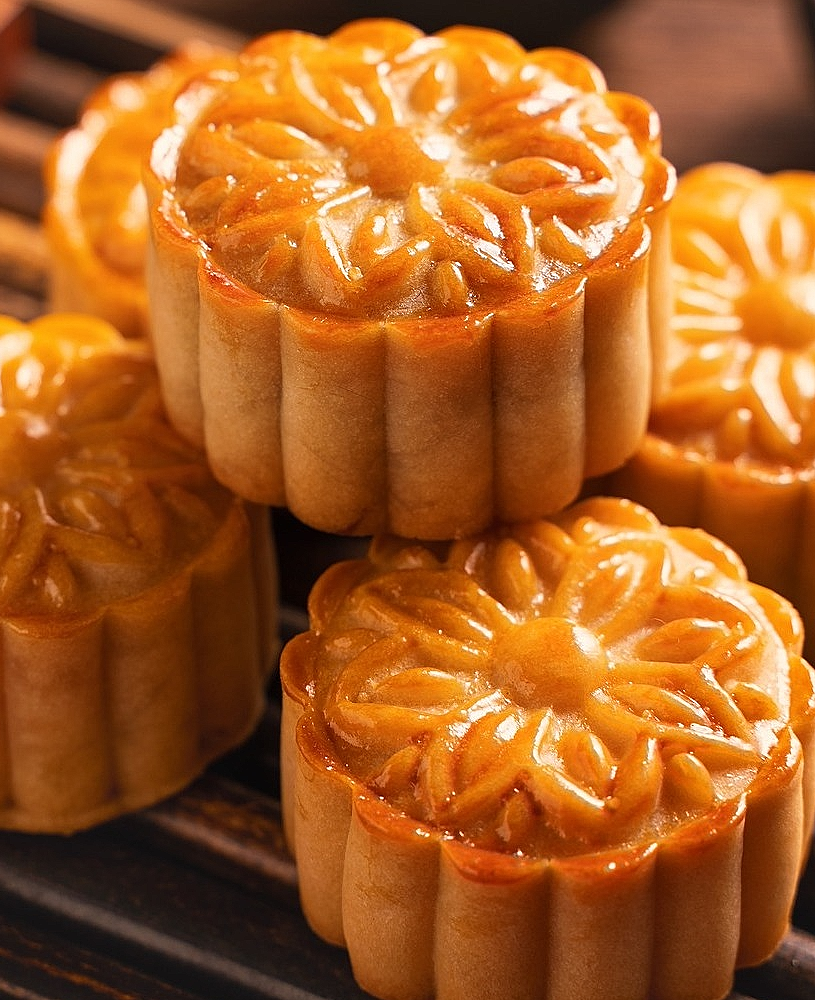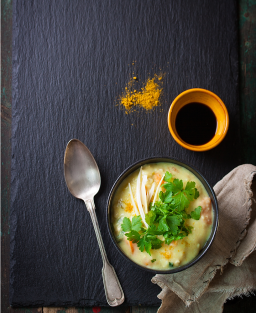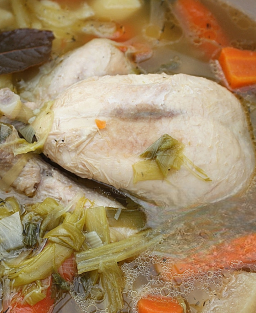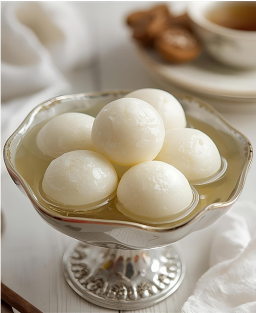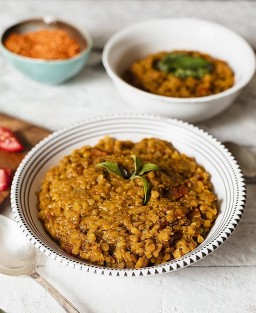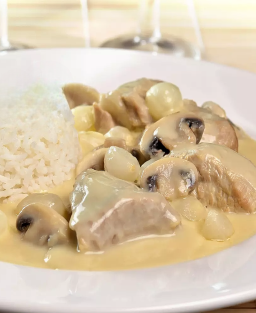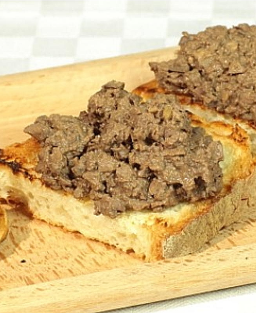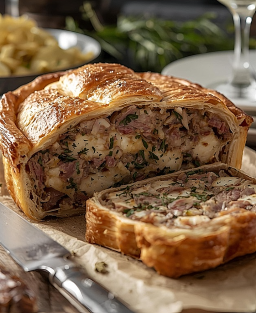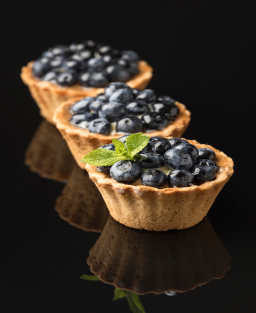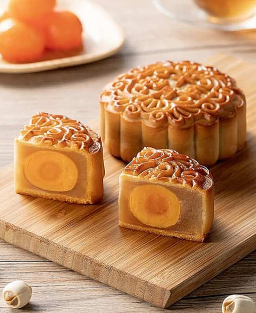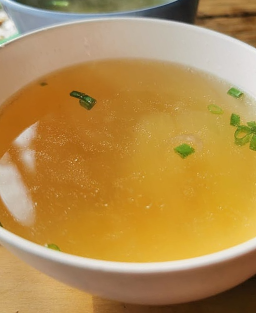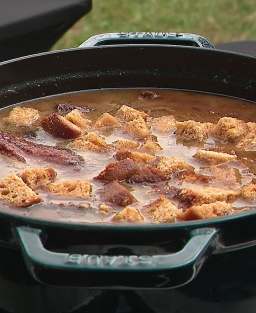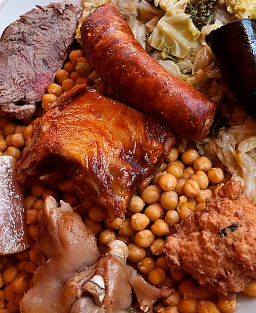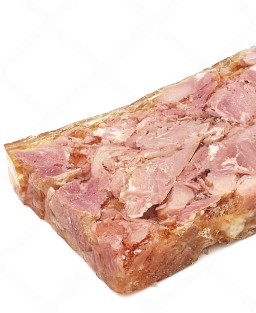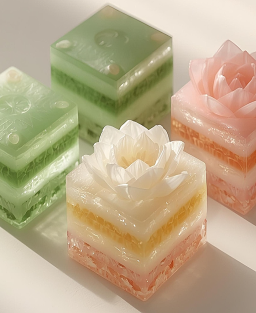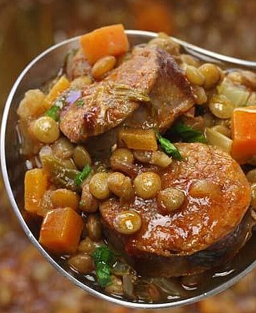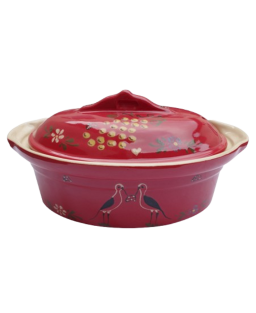Traditional Taiwanese Mooncake (月餅)
Traditional Taiwanese Mooncake (月餅) – Iconic Pastry of the Moon Festival, Symbol of Family Reunion
Anecdote (台語 / Taiwanese)
食月餅,團圓圓
Tsia̍h goe̍h-piáⁿ, thoân-înn-înn
意思是:吃月餅,就是一家人團團圓圓,像月娘圓圓,心也平平安安。
這句台灣古語傳說自清代閩南移民時期,寓意家庭和樂、世代平安。
月餅圓如滿月,象徵天人合一與團圓永續。
“Eating the mooncake is to gather in peace and the roundness of the moon.”
This ancient Taiwanese saying reminds us that the round shape of the mooncake symbolizes family reunion and universal harmony.
Legend
According to ancient legend, Chang’e (嫦娥), the wife of the celestial hero Hou Yi, drank the elixir of immortality meant for her husband to prevent it from falling into the wrong hands.
Lifted by divine lightness, she ascended to the moon, where she has lived ever since — wrapped in radiance and longing, the eternal guardian of separated lovers.
Each year, when the moon becomes full and bright, families look up to the sky and offer round mooncakes to honor the lunar goddess.
These offerings symbolize the bond between worlds, fidelity, longevity, and the sweetness of reunion.
Thus, at the heart of the Moon Festival (中秋節 / Zhōngqiū Jié), sharing mooncakes perpetuates the hope that loved ones, wherever they may be, can reunite beneath the same silvery light — like Chang’e and Hou Yi, united by the moon yet separated by the heavens.
Meta Description
Discover the traditional Taiwanese Mooncake (月餅), an iconic pastry of the Moon Festival, symbolizing unity, prosperity, and longevity.
Country / Region
-
Country: Taiwan
-
Region: Pan-Taiwan (found throughout the island, with distinct styles in Taipei, Tainan, and Kaohsiung)
-
Evolution of the recipe:
Originally filled with red bean or lotus paste, the mooncake has evolved into modern versions: matcha, taro, tropical fruit, or even chilled “ice mooncakes.”
The crust has become lighter, less sweet, and the presentation more refined, often sold in elegant gift boxes.
Historical Background
The mooncake originated during China’s Tang Dynasty (618–907) and took deep root in Taiwanese culture through the Moon Festival (中秋節).
Chinese migrants who settled in Taiwan in the 17th century brought the pastry as a ritual food, first crafted in monasteries and artisanal bakeries.
During the Japanese colonial era (1895–1945), Taiwanese bakers adopted finer pastry techniques (sifted flours, light egg glazing) and sweet variations inspired by wagashi.
Today, Taiwanese mooncakes are known for their supple texture, balance of sweet and salty flavors (thanks to salted egg yolk), and their wide range of local flavors.
Signature Versions by Three Renowned Pastry Chefs
-
Chen Tsung-Ho (陳宗和) – Master baker from Tainan who codified the classic lotus paste and salted egg yolk mooncake.
-
Lai Mei-Yun (賴美雲) – Innovated the chilled version using high-mountain oolong tea.
-
Wu Chia-Lin (吳嘉霖) – Contemporary Taipei chef known for taro and salted cheese mooncakes blending tradition and creativity.
Description
A golden round pastry symbolizing the full moon, the Taiwanese mooncake features a thin, crumbly crust and a rich, dense filling of lotus or red bean paste — sometimes with a salted egg yolk at the center, representing the moon itself.
Its texture should be soft, the crust gently glossy, and the aroma delicately balanced.
Ingredients (for 12 pieces)
For the dough:
-
Low-gluten flour (T45): 500 g
-
Golden syrup: 300 g
-
Refined peanut oil: 100 g
-
Alkaline water: 5 g
For the filling:
-
Lotus seed or red bean paste: 600 g
-
Salted egg yolks (cooked): 6 halves
-
Roasted melon seeds (optional): 30 g
Egg wash:
-
1 whole egg, beaten
Preparation (Professional Method)
Total time: 3 h 00
(Preparation: 1 h – Resting: 1 h – Baking: 30 min – Cooling: 30 min – Maturation: 24 h)
1. Dough Preparation (皮, pí)
-
Weigh and prepare:
All ingredients at room temperature. Sift the flour (type T45, 7–8% gluten). -
Base emulsion:
In a mixing bowl, combine golden syrup, oil, and alkaline water until smooth and shiny. -
Mixing:
Add flour in one go, mix for 1–2 minutes until a soft, even dough forms. Avoid over-kneading. -
Rest:
Shape into a ball, cover, and let relax for 1 hour at 24–26 °C.
2. Filling Preparation (餡, xiàn)
-
Divide lotus or red bean paste into 12 portions of 55 g each.
-
Insert half a salted egg yolk in the center of each portion, seal and roll into a smooth ball.
-
Pro tip: Steam the yolks for 8 minutes before use for a softer texture and balanced saltiness.
3. Shaping (成型, chéngxíng)
-
Divide the dough into 12 portions of 30 g, flatten into 10–12 cm discs (2–3 mm thick).
-
Wrap each filling ball with dough, sealing tightly without air pockets.
-
Lightly flour the traditional wooden or polycarbonate mooncake mold, press firmly, then release onto a baking sheet lined with parchment paper.
4. Baking (烘焙, hōngbèi)
-
Preheat oven to 180 °C.
-
Bake 10 minutes, remove, rest 5 minutes, then brush with beaten egg.
-
Bake again for 15–20 minutes at 170 °C until golden brown and shiny.
-
Cool 30 minutes on a wire rack.
5. Maturation (回油, huíyóu)
-
Place cooled mooncakes in an airtight container and let rest for 24 hours at room temperature.
This “oil-return” process allows the crust to soften and the flavors to meld, resulting in the characteristic glossy, tender texture.
Safety Standards
-
Use pasteurized or fully cooked salted eggs (70 °C minimum).
-
Maintain strict hygiene to avoid oil-sugar contamination.
Regional Variations
-
Tainan style: Lotus paste with double salted egg yolk.
-
Taipei style: Red bean paste with melon seeds, softer texture.
-
Modern chilled version (冰皮月餅): Glutinous rice dough with fruity fillings, no baking required.
-
Oolong tea version: Concentrated tea infusion added to lotus paste.
Expert Tips
-
Do not overwork the dough.
-
Always allow 24 hours of resting before serving.
-
For a glossy crust, apply two thin layers of egg wash 10 minutes apart.
Serving Suggestions
-
Traditional: Presented in lacquered wooden boxes or moon-themed gift sets.
-
Gastronomic: Served in quarters with hot tea.
Classic Pairings
-
High-mountain oolong tea (Alishan, Lishan).
-
Autumn fruits (pears, persimmons).
Recommended Drinks
-
Local: Roasted oolong tea (Taiwanese Houjicha).
-
European: Sweet wine such as Jurançon or Muscat.
Nutrition Facts (per 90 g mooncake)
-
Energy: 390 kcal / 1630 kJ
-
Fat: 15 g
-
Carbohydrates: 55 g
-
Protein: 8 g
-
Fiber: 2 g
-
Allergens: gluten, egg, peanut
-
Gluten-free version possible with glutinous rice flour and maltose syrup.
Glossary (Culinary and Classical Taiwanese Terms)
-
Yue Bing (月餅): Literally “moon cake.”
-
Golden syrup (金糖漿): Inverted sugar syrup giving elasticity to the dough.
-
Alkaline water (鹼水): Mild solution that neutralizes acidity and enhances the golden hue.
-
Bingpi (餅皮): Outer pastry crust of the mooncake.
-
Lianrong (蓮蓉): Sweet lotus seed paste.
-
Huangdan (鹹蛋黃): Salted egg yolk, symbol of the moon.
-
Syrup retrogradation: Resting phase after baking that softens the crust and blends flavors.







